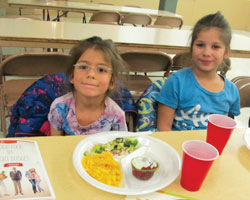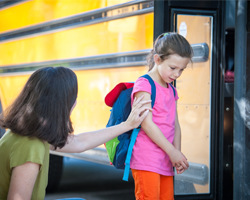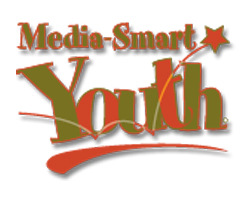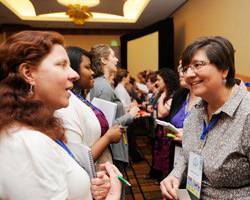Professional Development
NAA publishes fresh, new content every week covering a wide variety of topics related to the field of aftershool. In addition, NAA offers a variety of opportunities for virtual professional development (PD) through meaningful content, conversations and connections. Click here to see full descriptions of virtual PD offerings.
Cool Down and Fire Up with Healthy Snacks!
Wednesday, 13 August 2014 00:00Help your students cool down from the late summer heat with healthy frozen treats. Try freezing fruits such as grapes and melon chunks in the freezer, or make "popsicles" by inserting sticks into peeled bananas and freezing them.
Study Finds Majority of OST Programs Using NAA Physical Activity Standards
Monday, 28 July 2014 13:11In January 2014, Jean Wiecha, PhD, and Michelle Barnes, MPH—both of RTI International, and Georgia Hall, PhD, of Wellesley College, published a report on the awareness and implementation by out-of-school time (OST) programs of the Physical Activity Quality Standards (PAQS) adopted by NAA in April 2011.
Healthy OST Resource BINGO
Thursday, 24 July 2014 00:00Wondering how to keep healthy living in the forefront of your afterschool program? Are you ready to play BINGO and build a healthier out-of-school time site? Print out this resource to use all year long!
Building Social Support with Families: Practical Ideas and Tips
Monday, 14 July 2014 16:02Research shows that parents believe it's important for their children to have water, fresh fruit and vegetables, and physical activity opportunities during out-of-school time (OST). Parents also believe that OST programs should promote healthy environments for children.
Working with School Districts, Other Community Partners
Monday, 14 July 2014 15:57Collaboration is the name of the game today! Working with school districts and other community organizations can produce great outcomes, especially for all the children involved.
Unless you are one of the very lucky afterschool programs operating in your own space, collaboration for you most likely starts with the sharing of school buildings, recreation centers, churches, and other community spaces, each and every day. Just this act alone requires open lines of communication and active coordination. Even then, however, you may be faced with the rogue Girl Scout Troop showing up in the cafeteria at 4:30 to distribute their annual cookies—displacing your program for the rest of the afternoon. Oh, no! What to do?
Newly Published Paper Recognizes Importance of STEM in Afterschool Programming
Monday, 14 July 2014 00:00Science, technology, engineering, and math (STEM) studies have become a standard part of many afterschool and summer programs' comprehensive programming. While providers and practitioners have long valued the hands-on, inquiry-driven programs, directly seeing the effect afterschool STEM programs have on students means funders, policymakers, and other stakeholders often want data that substantiates such claims and demonstrates positive changes in a variety of outcomes.
Best Practices to Prevent Bullying on a Field Trip
Monday, 30 June 2014 14:32Like children, bullying comes in many shapes and sizes. Bullying often takes the form of name-calling, systematic exclusion, rumors, threats, physical contact, and misuse of social media, said Becky Telzerow, M.A., L.L.P.C., a counselor at Forest Hills Public Schools in Grand Rapids, Michigan. According to a survey by the Center for Disease Control and Prevention, twenty percent of ninth- to twelfth-grade American students have experienced bullying. Another study, by the National Center for Education Statistics and Bureau of Justice Statistics, found that twenty-eight percent of students in grades six to twelve have been bullied.
New Staff Starting This Fall?
Monday, 30 June 2014 00:004 ways to enhance orientation before the new school year starts
As fall is approaching and the new school year is underway, most afterschool programs have begun the cycle of hiring and orientating new staff. As you dust off your orientation packets and new staff checklists, this can be a perfect time to evaluate your current methods and consider new strategies that may increase effectiveness and assist your new employees in surviving the new school year. This critical time can be challenging for new staff, existing staff, families, and program participants.
Free Media-Smart Youth Curriculum From NIH Promotes Health and Media Literacy
Tuesday, 17 June 2014 12:47Media-Smart Youth: Eat, Think, and Be Active! is an interactive afterschool education program that helps young people ages eleven to thirteen better understand the complex media world around them, and how it can influence their health. Developed by the National Institutes of Health (NIH), the free Media-Smart Youth curriculum includes ten lessons that combine media literacy and youth development principles with federal recommendations about nutrition and physical activity.
Effective Collaboration: Making the Most of Your Time and Expertise
Tuesday, 17 June 2014 11:54At the 2014 National AfterSchool Association Annual Convention, Kate Goddard and Karen Peterson of EdLab gave the presentation Collaborate for Innovative STEM Programming for Girls. Here, they elaborate on some of the most powerful ideas from their presentation.
National AfterSchool Association • 2961A Hunter Mill Road, #626 • Oakton, VA 22124 • info@naaweb.org










